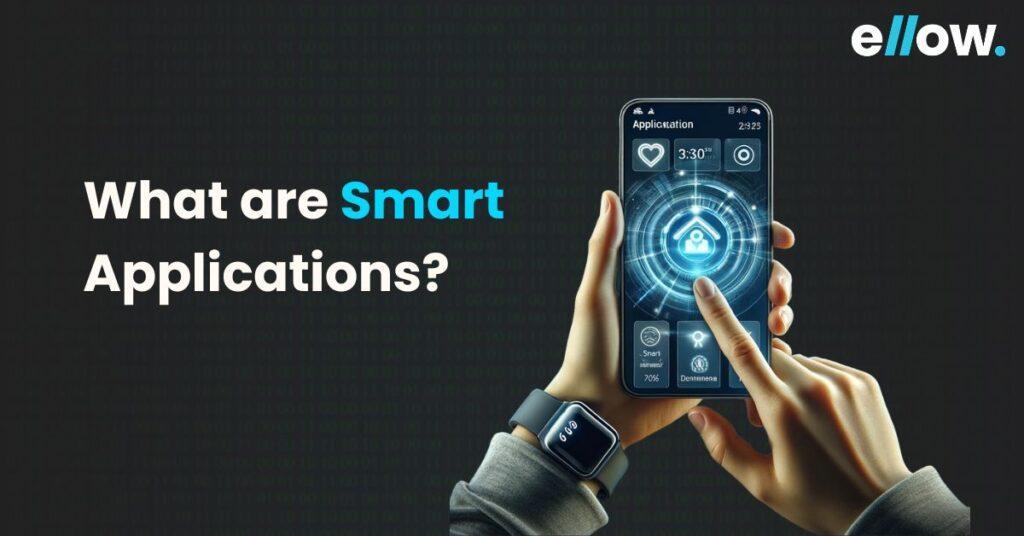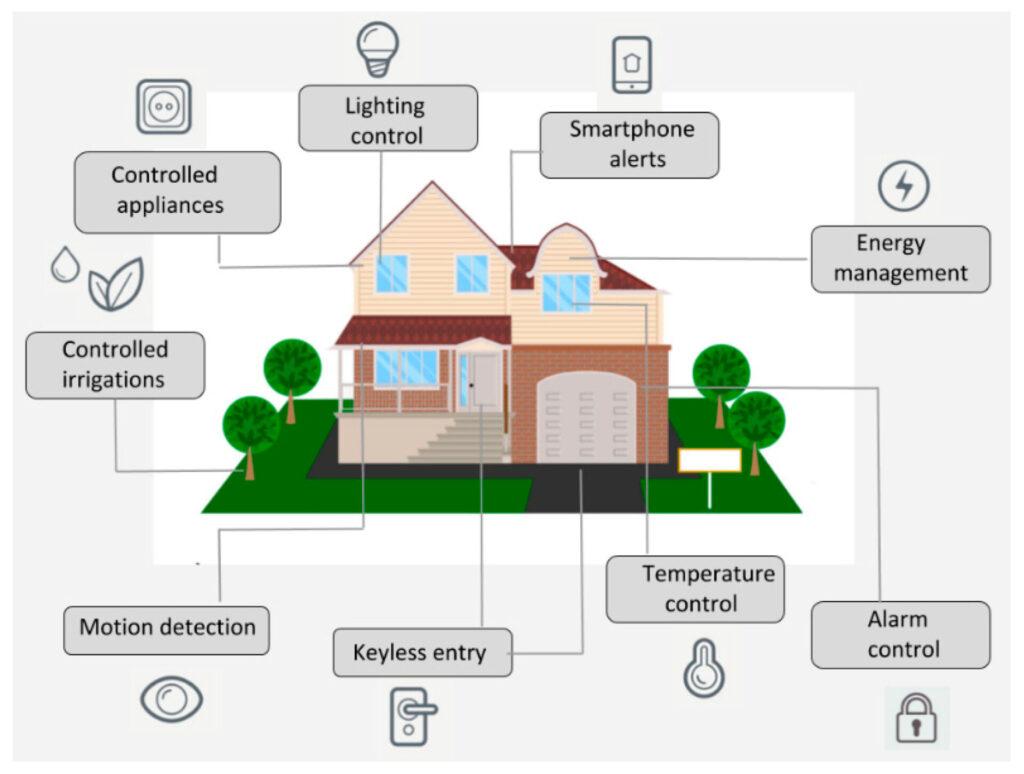In today’s digital world, where technology is constantly changing our lives, smart apps are like the pioneers leading the way. These clever applications are not your typical apps—they’re more like smart companions that can learn and interact with us in ways we used to only see in sci-fi movies.
In this tech-driven era, smart apps play a huge role. They go beyond the usual and make our daily interactions with technology way simpler and seamless. Let’s dig into what makes these apps tick, exploring their key features, how they connect to the Internet of Things (IoT), and the big impact they have on how we experience the digital world.
The possibilities are as vast as the digital landscape itself.
According to Business Insider, the global IoT market size is expected to reach over $1.5 trillion by 2030.
Understanding the Smart Applications
A smart application, often referred to as a smart process application or smart app, represents a sophisticated blend of software capabilities that use data dynamically to enhance user experiences and provide insights.
These applications are not just confined to interacting with human users; they can also interface with machines, augmenting the functionality of systems and devices in various business contexts, often through automation.
At their core, smart applications are deeply data-driven. This characteristic is pivotal to their functionality. For instance, in devices like the Apple smartwatch, sensors play a crucial role in collecting data, which forms the backbone of the app’s infrastructure.
The intelligence of smart applications stems from their use of advanced data science techniques such as predictive analytics, machine learning (ML), and artificial intelligence (AI). These technologies enable smart apps to analyze and learn from the data, make predictions, and adapt to user behaviors and environmental changes.
Distinctively, smart applications often take an enterprising approach to user interaction. Unlike traditional applications where the user initiates the engagement, smart apps proactively reach out to users.
This is achieved through mechanisms like push notifications, chatbots, and messaging services, facilitating a more engaging and interactive user experience.
Moreover, smart applications are contextual and intelligent. They don’t just process data; they understand it in relation to the user’s context, preferences, and environment. This understanding allows them to offer personalized and relevant responses or actions, enhancing the overall user experience.
What is IoT?
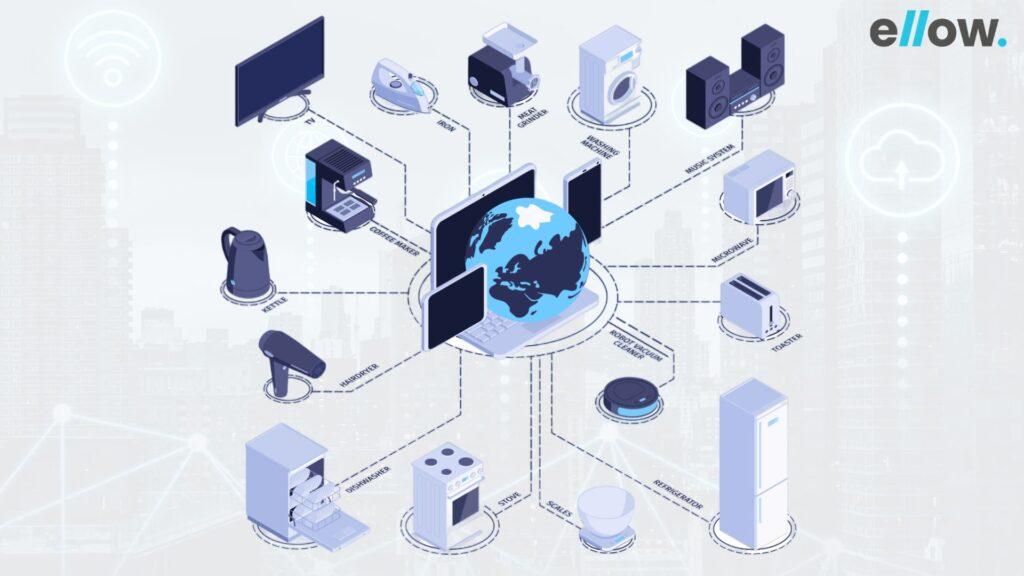
According to a recent report by Statista, by 2030 the number of connected devices worldwide is projected to exceed 25 billion.
IoT, the acronym for Internet of Things, encapsulates a network of physical objects, or “things“, integrated with software and connectivity features. These objects are not just ordinary items; they’re equipped to collect, send, and receive data, making them interactive and intelligent.
Imagine a world where your coffee maker starts brewing as soon as your alarm goes off, or where streetlights adjust their brightness based on real-time traffic conditions – that’s IoT in action.

This rapid expansion is fueled by advances in cloud computing and the affordability of sensors, bringing IoT within reach for more applications and users. Industry leaders are particularly excited about this trend, integrating IoT with smart apps to create dynamic, responsive systems. These smart objects are designed to communicate not only with each other but also with users, enhancing efficiency and user experience.
When it comes to smart apps, IoT is the magic behind the scenes that helps different devices team up and create a really clever system. So, in simple terms, IoT is all about making your stuff work together and be super smart!
Features of Smart Apps
Smart apps are distinguished by a set of features that go beyond the conventional attributes of traditional applications. These features not only show how technologically advanced smart apps are but also highlight their commitment to user-centric design and adaptability. Let’s explore the key features that define the essence of smart applications:
1. Adaptability
Smart apps possess the ability to adapt to changing circumstances and user behaviour. This feature ensures that the app remains relevant and effective, evolving its functionalities based on user preferences and external factors.
2. Context Awareness
They are attuned to the context in which they are used, adjusting their responses and functionalities accordingly. It enhances user experience by providing contextually relevant information and services, making the app more intuitive and user-friendly.
3. User-centric Design
Smart apps prioritise the user experience, employing design principles that focus on usability, accessibility, and overall user satisfaction. By putting the user at the centre of the design process, smart apps ensure a seamless and enjoyable interaction, fostering positive user engagement.
4. Real-time Data Processing
Smart apps process data in real-time, allowing users to access the most up-to-date information and insights. This is crucial for applications that require timely and accurate data, such as weather apps providing real-time forecasts or financial apps tracking market fluctuations.
5. Personalization
They offer personalised experiences by tailoring content, recommendations, and features based on user preferences. It enhances user engagement and satisfaction, creating a more individualised and relevant interaction with the app.
6. Integration with IoT Devices
Smart apps seamlessly integrate with Internet of Things (IoT) devices, allowing users to control and monitor connected devices. It enables users to create a connected ecosystem where devices work in harmony, enhancing convenience and efficiency in tasks like home automation or healthcare monitoring.

7. Predictive Analytics
Smart apps leverage predictive analytics to anticipate user behaviour and needs, offering proactive suggestions and features. These apps enhance user convenience and streamline interactions by predicting user preferences, contributing to a more intelligent and efficient user experience.
8. Automation Capabilities
Smart apps incorporate automation to streamline processes and reduce manual interventions. Automation enhances efficiency by automating repetitive tasks, allowing users to focus on more strategic and creative aspects, while also contributing to a smoother and hassle-free user experience.
9. Multi-platform Accessibility
Smart apps are designed to be accessible across various platforms and devices. This ensures a consistent user experience regardless of the device used, promoting flexibility and convenience for users who may switch between smartphones, tablets, and other devices.
10. Voice and Gesture Recognition
Many smart apps utilise voice and gesture recognition technologies for more natural and interactive user interfaces. This feature enhances accessibility and user engagement by allowing users to interact with the app using voice commands or gestures, contributing to a hands-free and user-friendly experience.
11. Continuous Learning and Improvement
Smart apps continuously learn from user feedback and behaviour, undergoing regular updates to improve functionalities. This iterative approach ensures that the app stays relevant and competitive, incorporating user insights for ongoing enhancements and refinements.
12. Security Measures
Smart apps prioritise robust security measures to protect user data and ensure privacy. Given the interconnected nature of many smart apps, stringent security protocols are essential to safeguard user information, maintaining trust and confidence in the app.
Traditional Apps Vs Smart Apps
Smart apps vs. traditional applications, it’s essential to recognize the unique advantages each brings to the table. While traditional applications may excel in simplicity, smart apps outshine them with their ability to learn and predict user needs, providing a more tailored and dynamic interaction.
1. Data Orientation
- Traditional Apps: These apps often rely on a more static approach to data, typically storing and retrieving information from a central database. The data is usually structured and follows a predefined schema.
- Smart Apps: These apps are more dynamic in handling data. They often leverage real-time data analytics, machine learning, or artificial intelligence to adapt and respond to user inputs. Data in smart apps is often unstructured, allowing for a more flexible and responsive user experience.
2. Architecture
- Traditional Apps: Typically follow a monolithic architecture, where all components are tightly integrated into a single codebase. Changes or updates may require substantial modifications to the entire application.
- Smart Apps: Often adopt a modular or microservices architecture, allowing for greater flexibility and scalability. This enables developers to update specific features without affecting the entire application, promoting agility in development.
3. Evolution
- Traditional Apps: Evolve through periodic updates or version releases. These updates may bring new features or bug fixes, but the core functionality usually remains consistent for longer periods.
- Smart Apps: Evolve continuously through machine learning algorithms and real-time updates. They can adapt to user behaviour and preferences, providing a more personalised and evolving user experience over time.
4. Personalization
- Traditional Apps: Personalization is often based on user settings or preferences manually configured within the app. It may not adapt dynamically to changing user behaviour.
- Smart Apps: Utilise advanced algorithms to analyse user interactions and provide personalised recommendations or features in real-time. This level of personalization enhances user engagement and satisfaction.
5. Interconnectivity
- Traditional Apps: Typically operate in isolation, with limited interaction with other applications or services.
- Smart Apps: Embrace interconnectivity by integrating with other smart devices or services. They may utilise APIs to exchange data with other applications, enhancing the overall ecosystem of services available to users.
Industry-based applications of Smart Apps
Smart applications have found a myriad of applications across diverse industries, revolutionising the way we engage with technology. The following use cases showcase the versatility and impact of smart apps in various domains:
1. Healthcare
Did you know approximately 60% of healthcare organisations have implemented IoT technology? (Source)
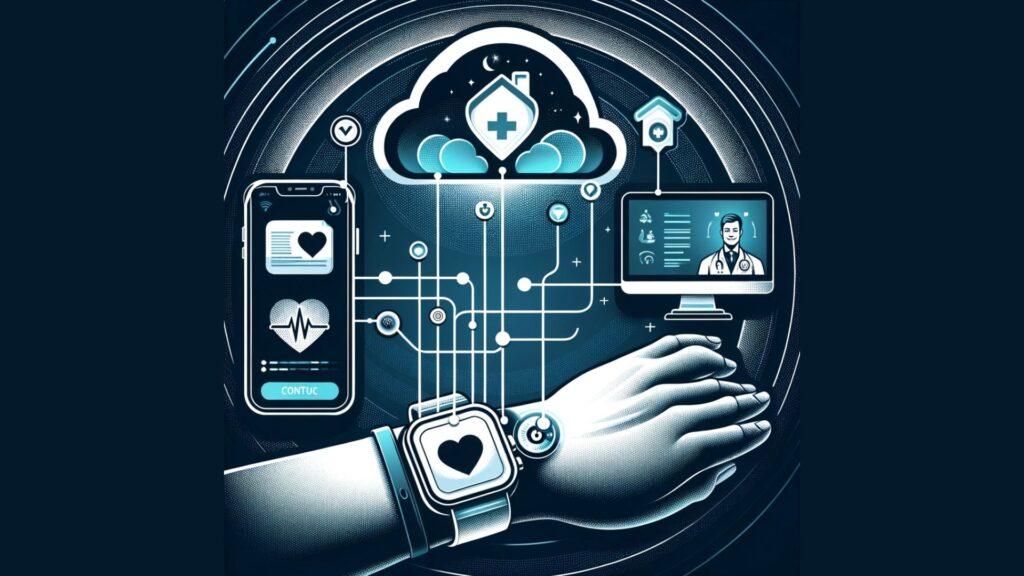
Smart health applications have transformed patient care, enabling remote monitoring, medication reminders, and personalised health insights. Real-time health data empowers patients with improved disease management and facilitates more proactive healthcare interventions.
2. Transportation
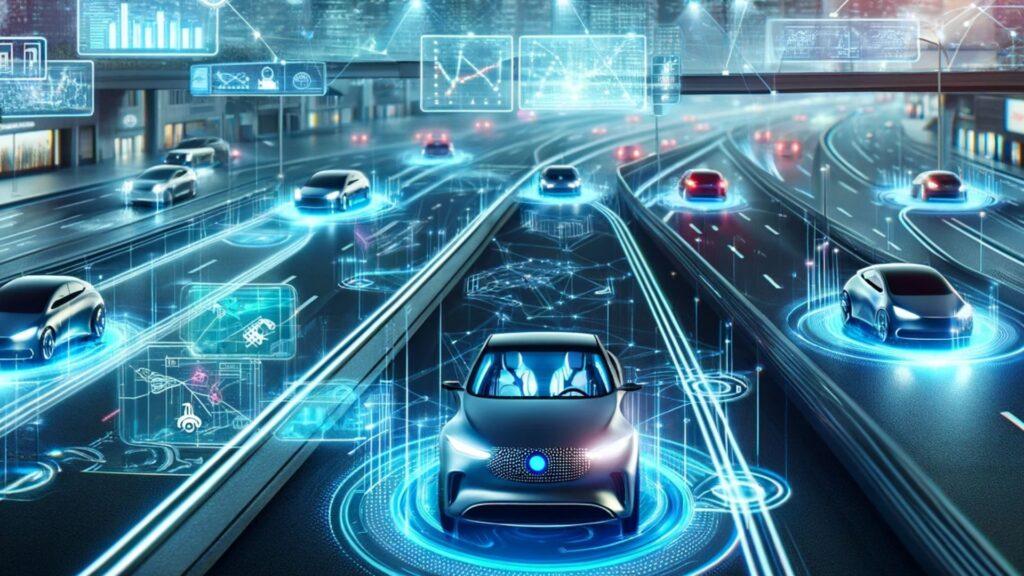
In the transportation sector, smart apps deliver real-time traffic updates, optimise routes, and facilitate ride-sharing services. The result is reduced travel time, lower congestion, and enhanced overall transportation efficiency for commuters.
3. Home Automation
Smart home apps allow users to remotely control lighting, security systems, and appliances. This contributes to increased energy efficiency, enhanced security, and the convenience of managing home devices from anywhere.
4. Education
Smart education apps offer personalised learning experiences, interactive content, and real-time progress tracking. Students benefit from tailored learning paths and engaging content, and educators can track individual progress more effectively.
5. Revolutionizing Retail
Smart retail apps leverage location-based services, personalised recommendations, and mobile payments to enhance shopping experiences. This results in targeted promotions and streamlined checkout processes for customers.
6. Financial Technology Advances
Smart finance apps provide real-time financial insights, budgeting tools, and investment advice. Users can make informed financial decisions, track expenses, and manage investments with greater precision.
7. Smart Agriculture Solutions
Smart agriculture apps leverage sensors and data analytics for precision farming, weather predictions, and crop monitoring. This enables farmers to optimise crop yields, conserve resources, and make data-driven decisions for sustainable agriculture.
8. Wearable Health Tech Advancements
Smartwatches and fitness trackers monitor health metrics, track exercise, and offer personalised wellness insights. Users can proactively manage their health, track fitness goals, and receive actionable insights for a healthier lifestyle.
9. Smart City Initiatives
Smart city apps integrate various services like transportation, public safety, and utilities for more efficient urban living. This results in improved urban planning, public services, and a better quality of life for residents.
The list is ever-expanding, as smart apps continue to evolve each day; consequently, the utilisation of these intelligent applications is skyrocketing at an unprecedented rate.
Challenges in Smart Apps Development
Creating smart applications comes with its fair share of challenges, even though they offer inventive solutions and improved experiences. It’s essential to address these obstacles during the development process to ensure the final product aligns with user expectations and industry norms. Here are some significant challenges encountered in the development of smart apps:
1. Security and Privacy
Developing smart apps involves handling sensitive user data, creating potential security risks. To counter this, it’s crucial to prioritise robust encryption, implement secure authentication methods, and consistently update security protocols. This approach not only protects user information but also fosters trust in the application.
2. Device Compatibility and Interoperability
The challenge of accommodating the diverse landscape of devices with different operating systems and communication protocols is addressed through rigorous testing, regular updates, and optimization for multiple platforms. Additionally, standardising communication protocols, such as MQTT or CoAP, enhance interoperability, facilitating seamless integration with various IoT devices.
3. Data Privacy Management
Smart apps often collect and process substantial user data, raising privacy concerns. Implementing strict data privacy policies, obtaining explicit user consent, and adhering to relevant data protection regulations are essential steps to safeguard user privacy.
4. Streamlining Development Processes
The complexity of integrating IoT, AI, and other advanced technologies is met by hiring experienced developers, utilising agile development methodologies, and breaking down the development process into manageable stages. This ensures a more efficient and organised approach to smart app development.
5. Cost-Efficient Development
The challenge of high development costs, especially when integrating IoT devices, can be mitigated through thorough cost-benefit analyses, prioritising essential features, and exploring cost-effective development approaches without compromising quality.
6. Enhancing User Experience
Providing a seamless and intuitive user experience in the dynamic world of smart apps is achieved through user testing, continuous feedback gathering, and iterative design processes. This ensures the interface is user-friendly, intuitive, and aligns with user expectations.
7. Standards and Regulations Adherence
The absence of universal standards and regulations in the smart app domain can lead to inconsistencies. Staying informed about emerging standards, complying with existing regulations, and advocating for industry-wide standards ensures uniformity in development practices.
8. Energy Efficiency Optimization
Optimising for energy efficiency in smart apps running on resource-constrained devices involves employing energy-efficient coding practices, optimising background processes, and implementing power-saving features to extend device battery life.
9. Scalability and Performance
To address scalability challenges arising from the growing number of users and connected devices, smart app architecture should be designed with scalability in mind. Utilising cloud services to handle increased loads and regular optimization for performance contribute to sustained scalability.
10. AI Integration Management
Integrating artificial intelligence (AI) features requires specialised knowledge and may introduce unpredictability. Collaborating with AI experts, thorough testing of AI algorithms, and implementing mechanisms for continuous learning and improvement ensure effective AI integration.
11. User Education and Adoption Promotion
Overcoming user-related challenges, such as a lack of understanding or resistance to new technologies, involves providing clear and user-friendly onboarding processes, offering educational resources, and emphasising the practical benefits of using the smart app.
Future Trends in Smart Applications
Looking ahead, the landscape of smart app development is poised for intriguing advancements. Future trends suggest a continued integration of emerging technologies, such as augmented reality, decentralized applications, and a further amalgamation of IoT and AI. These innovations are expected to redefine the way users interact with digital experiences, providing more immersive, interconnected, and intelligent functionalities.
As the industry evolves, a key emphasis will be on ensuring user-centric design principles and addressing challenges related to security and privacy. In conclusion, the future of smart app development holds a promise of continual growth and sophistication.
By embracing these trends, developers can create applications that not only meet the ever-evolving needs of users but also contribute to a more interconnected and intelligent digital ecosystem.
FAQs
What are some examples of Smart Applications?
Examples include smart thermostats, fitness trackers, home security systems, and personalized recommendation engines for shopping or entertainment.
What technologies are used in Smart Applications?
Technologies commonly used include IoT (Internet of Things), cloud computing, big data analytics, AI (Artificial Intelligence), and ML (Machine Learning).
What are the benefits of using Smart Applications?
Benefits include increased efficiency, convenience, energy savings, enhanced decision-making, and personalized experiences.
What are the challenges associated with Smart Applications?
Challenges can be privacy concerns, security risks, data management issues, and the need for standardization in IoT devices and platforms.
How do Smart Applications impact privacy?
They often process personal data to function, which raises concerns about data protection, user consent, and potential surveillance.
How can I develop a Smart Application?
Development usually starts with identifying a user need, choosing the right technology stack, designing the user experience, and implementing AI and data analytics capabilities or you can hire developer from ellow leave it on us.
